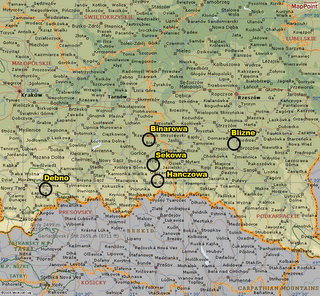UNESCO sites of POLAND – Wooden Churches of Southern Little Poland

Map of UNESCO SITE – Wooden Churches of Southern Little Poland
Brief Description
The wooden churches of southern Little Poland represent outstanding examples of the different aspects of medieval church-building traditions in Roman Catholic culture. Built using the horizontal log technique, common in eastern and northern Europe since the Middle Ages, these churches were sponsored by noble families and became status symbols. They offered an alternative to the stone structures erected in urban centres.
Justification for Inscription
Criterion iii: The churches are considered to bear an exceptional testimony to the tradition of church building from the Middle Ages. The churches have also been preserved in the context of the vernacular village and landscape setting. Criterion iv: The nominated churches are exceptionally well preserved and representative examples from the medieval type of church, which respected the ambitions of their sponsors. Criterion vi: Even though the churches obviously have continued fulfilling their liturgical and cult function for several centuries, ICOMOS does not consider this to be sufficient for applying this criterion. 4. ICOMOS RECOMMENDATIONS Recommendation for the future ICOMOS considers that this nomination could be completed with properties in Hungary, Romania, Slovakia, and/or Ukraine, where the churches can represent later periods as well as other types of traditions (potential for serial nomination). Recommendation with respect to inscription That the six medieval wooden churches of Binarowa, Blizne, Debno, Haczow, Lipnica Murowana, and Sekowa be inscribed on the World Heritage List on the basis of criteria iii and iv: Criterion iii: The wooden churches of Little Poland bear important testimony to medieval church building traditions, as these related to the liturgical and cult functions of the Roman Catholic Church in a relatively closed region in central Europe. Criterion iv: The churches are the most representative examples of surviving Gothic churches built in horizontal log technique, particularly impressive in their artistic and technical execution, and sponsored by noble families and rulers as symbols of social and political prestige.
Copyright ? 1992-2006 UNESCO World Heritage Centre